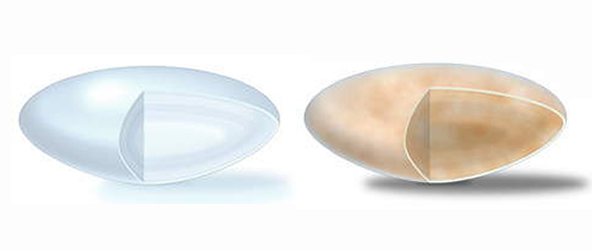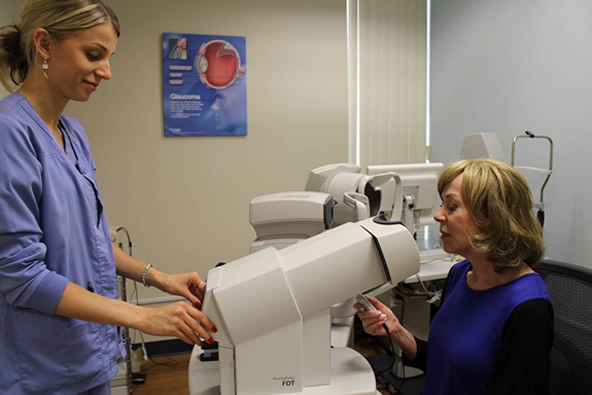When is it Time for Cataract Surgery?
What is a Cataract?
This is a normal aging of the lens that occurs in every eye, but at a different rate in each individual. Since you need to see through the lens, if it becomes cloudy, vision becomes blurrier. The cataract (the cloudy lens) can be removed surgically, and replaced with a man-made intraocular lens implant (IOL).

What are the Symptoms of a Cataract?
Cataracts cause a gradual change in the quality or clarity of the vision. The vision may become blurrier over time, sometimes with glare, halos, or loss of contrast. You may have more difficulty with night driving or reading in low light conditions. Sometimes colors can become harder to distinguish. Not all patients will have all of these complaints. In general though, the symptoms can be described as a decline in vision or more difficulty seeing in certain circumstances. A sudden change in vision is generally not due to a cataract.
How is a Cataract Evaluated?
To evaluate a cataract, you need a complete eye exam. We first check to see if a glasses prescription update will improve vision. As cataracts progress, they can cause your prescription to change, and an updated prescription alone may provide satisfactory improvement in vision. Your eyes are then examined including the use of dilating eye drops to allow the pupil to dilate so we can see the cataract well. All of the eye structures need to be checked to make sure that other reasons for decreased vision are not present (glaucoma, macular degeneration, retinal problems, etc.). We look at the cataract to assess the degree of clouding present. This helps determine whether the cataract accounts for the patient’s complaints about his or her vision.

When Should a Cataract be Removed?
A cataract should be removed when its effect on vision is bothersome to the patient. We always tell patients that there is no rush. A cataract should be removed when you feel that your vision is affected enough that surgery is warranted (provided, of course, that the eye exam indicates that cataract surgery is appropriate). There is almost never a time when you have to have cataract surgery. It is based on your needs. There is no specific vision that requires surgery.
Some patients are bothered by relatively small declines in the quality of their vision. For example, a patient may have good “eye-chart” vision but still have glare and halos that are making driving at night uncomfortable. This patient may opt to have surgery on a relatively mild cataract. Other patients, however, may feel that in spite of a rather dense cataract, their vision is adequate. Often these patients don’t drive anymore, and as long as they are satisfied with their visual function, it is ok to hold off on surgery.
If a patient’s vision is poor enough that it increases risk of falling or is hazardous for driving, we will let them know this. There are also times when the cataract has become dense enough that it is hard for the doctor to see through it into the eye to monitor other conditions such as glaucoma or macular degeneration. This is another case where we may encourage a patient to have cataract surgery. It is, however, always ultimately up to the patient to decide when to have cataract surgery, provided the doctor thinks that it is reasonable to proceed. Cataract surgery is almost never urgent.
For more detailed information on cataracts, cataract surgery, and different types of lens implants please select a topic below:

